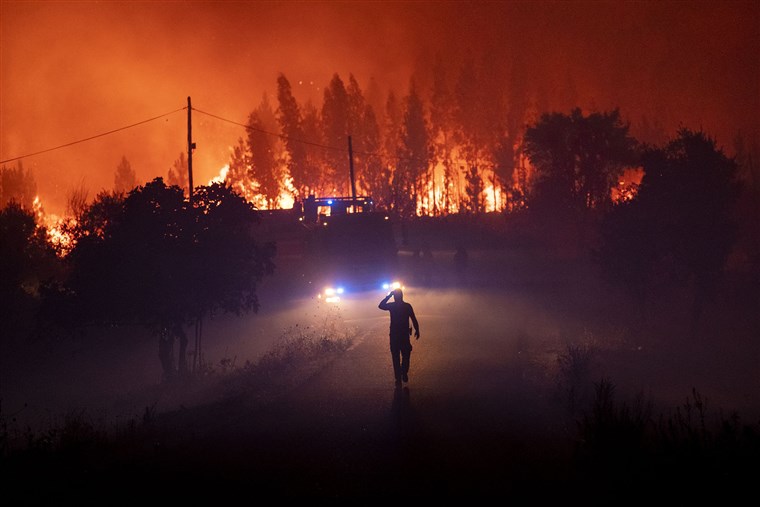When your lungs inhale and exhale air normally, they take in oxygen your cells need to survive and expel carbon dioxide. COVID-19 can inflame your airways and essentially drown your lungs in fluids. A ventilator mechanically helps pump oxygen into your body.
Similarly, How long does someone typically stay on a ventilator due to COVID-19?
Some people may need to be on a ventilator for a few hours, while others may require one, two, or three weeks. If a person needs to be on a ventilator for a longer period of time, a tracheostomy may be required. During this procedure, a surgeon makes a hole in the front of the neck and inserts a tube into the trachea.
Can you get pneumonia from COVID-19? Most people who get COVID-19 have mild or moderate symptoms like coughing, a fever, and shortness of breath. But some who catch the new coronavirus get severe pneumonia in both lungs. COVID-19 pneumonia is a serious illness that can be deadly.
Thereof, What is the recovery time for COVID-19 patients with Acute Respiratory Distress Syndrome (ARDS)?
Most people who survive ARDS go on to recover their normal or close to normal lung function within six months to a year. Others may not do as well, particularly if their illness was caused by severe lung damage or their treatment entailed long-term use of a ventilator.
What does COVID-19 do to the lungs?
COVID-19 can cause lung complications such as pneumonia and, in the most severe cases, acute respiratory distress syndrome, or ARDS. Sepsis, another possible complication of COVID-19, can also cause lasting harm to the lungs and other organs.
Which organ system is most often affected by COVID-19?
COVID-19 is a disease caused by SARS-CoV-2 that can trigger what doctors call a respiratory tract infection. It can affect your upper respiratory tract (sinuses, nose, and throat) or lower respiratory tract (windpipe and lungs).
Can a COVID-19 infection damage your lungs?
In critical COVID-19 — about 5% of total cases — the infection can damage the walls and linings of the air sacs in your lungs. As your body tries to fight it, your lungs become more inflamed and fill with fluid. This can make it harder for them to swap oxygen and carbon dioxide.
Can COVID-19 cause acute respiratory distress syndrome?
Lung damage in the course of this disease often leads to acute hypoxic respiratory failure and may eventually lead to acute respiratory distress syndrome (ARDS). Respiratory failure as a result of COVID-19 can develop very quickly and a small percent of those infected will die because of it.
Is COVID-19 linked to acute respiratory distress syndrome (ARDS) and multi-organ dysfunction?
The significant mortality rate associated with the ongoing Coronavirus disease 2019 (COVID-19) pandemic has been linked to acute respiratory distress syndrome (ARDS) and multi-organ dysfunction. Mechanisms underlying the phenomenon remain unclear.
In what conditions does COVID-19 survive the longest?
Coronaviruses die very quickly when exposed to the UV light in sunlight. Like other enveloped viruses, SARS-CoV-2 survives longest when the temperature is at room temperature or lower, and when the relative humidity is low (<50%).
Can you contract COVID-19 through sexual intercourse?
Although there is currently no evidence that the COVID-19 virus transmits through semen or vaginal fluids, it has been detected in the semen of people recovering from COVID-19. We would thus recommend avoiding any close contact, especially very intimate contact like unprotected sex, with someone with active COVID-19 to minimize the risk of transmission
Can I still have sex during the coronavirus pandemic?
If both of you are healthy and feeling well, are practicing social distancing and have had no known exposure to anyone with COVID-19, touching, hugging, kissing, and sex are more likely to be safe.
Does COVID-19 cause lung damage?
Like other respiratory infections that cause pneumonia, COVID-19 can cause short-term lung damage. In more severe cases, the damage can last a long time.
What is multisystem inflammatory syndrome in children in the context of COVID-19?
Multisystem inflammatory syndrome (MIS) is a rare but serious condition associated with COVID-19 in which different body parts become inflamed, including the heart, lungs, kidneys, brain, skin, eyes, or gastrointestinal organs. MIS can affect children (MIS-C) and adults (MIS-A).
What other illnesses are caused by coronaviruses?
Coronavirus is a family of viruses that can cause respiratory illnesses such as the common cold, severe acute respiratory syndrome (SARS) and Middle East respiratory syndrome (MERS).
What temperature kills the virus that causes COVID-19?
Research on the impact of temperature has shown that SARS-CoV-2, the virus that causes COVID-19, is sensitive to elevated temperatures, with over 99.99% inactivation in only a few minutes at 70°C (158°F). However, this temperature is far outside the limits of human comfort and could damage some building materials.
How long can COVID-19 survive out in the air and on other surfaces?
The scientists found that severe acute respiratory syndrome coronavirus 2 (SARS-CoV-2) was detectable in aerosols for up to three hours, up to four hours on copper, up to 24 hours on cardboard and up to two to three days on plastic and stainless steel.
How long can COVID-19 survive on surfaces?
Data from surface survival studies indicate that a 99% reduction in infectious SARS-CoV-2 and other coronaviruses can be expected under typical indoor environmental conditions within 3 days (72 hours) on common non-porous surfaces like stainless steel, plastic, and glass .
How long does it take for symptoms to appear after exposure to COVID-19?
People with COVID-19 have had a wide range of symptoms reported – ranging from mild symptoms to severe illness. Symptoms may appear 2-14 days after exposure to the virus.
How long does it take before COVID-19 symptoms appear?
Signs and symptoms of coronavirus disease 2019 (COVID-19) may appear two to 14 days after exposure. This time after exposure and before having symptoms is called the incubation period.
Join TheMoney.co community and don’t forget to share this post !




